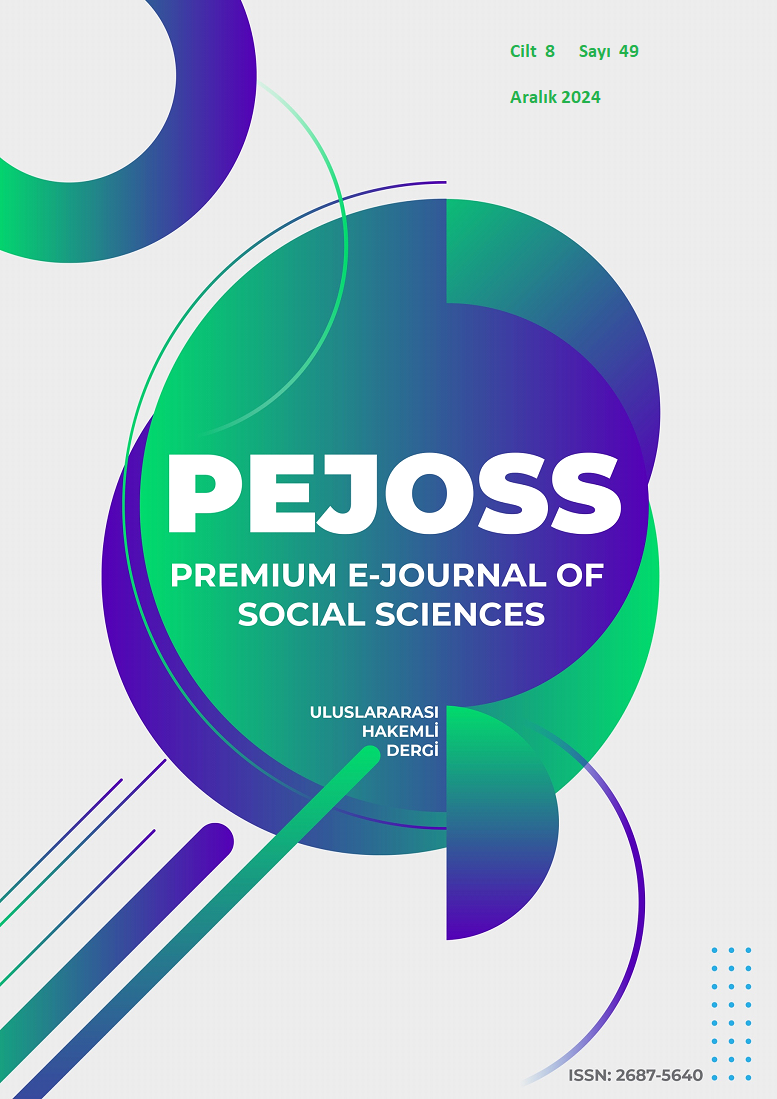Social Change or Global Strategy? Political Anatomy of Color Revolutions
DOI:
https://doi.org/10.5281/zenodo.14580336Keywords:
Revolutions, Color Revolutions, Social and Political Change, International Relations, Regional and Global Actors.Abstract
The article examines the phenomenon of color revolutions within the framework of revolutionary theory and aims to address the manipulations of regional and global actors on color revolutions in particular. Color revolutions are generally defined as mass movements that aim to realize demands for social and political change through democratic reforms. However, it is known that these movements are often supported and intervened by regional or global powers. In this context, the article analyzes the process of the emergence of color revolutions based on revolutionary theory and why these movements occur more frequently in regions such as the former Soviet countries, Eastern Europe and Africa. The article examines the methods and purposes of regional and global actors’ intervention in these revolutions, and examines how intervention tools evaluated in a wide range from diplomacy to media, from financial support to military interventions affect the direction and outcomes of color revolutions. In this context, attention is drawn to the long-term effects of regional and global actors, such as political instability in the geographies where color revolutions occur, changes in regional balances of power and increasing tensions in international relations. The article presents an analysis aimed at understanding the complex effects of color revolutions on regional and global politics using qualitative research methods, and evaluates how demands for social change intersect with global power strategies and how they shape the political anatomy of color revolutions within a historical, conceptual and theoretical framework.
Downloads
References
Ackerman, P., & Kruegler, C. (1994). Strategic Nonviolent Conflict: The Dynamics of People Power in the Twentieth Century. Praeger Publishers.
Anderson, K., & Mitchell, R. (2023). Mass mobilization and political change: Understanding color revolutions. International Security Studies, 48(2), 230–250.
Barsamov, A. (2006). Post-Soviet Revolutions and Civil Movements. Cambridge University Press.
Beissinger, M. R. (2007). Structure and example in modular political phenomena: The diffusion of Bulldozer/Rose/Orange/Tulip revolutions. Perspectives on Politics, 5(2), 259–276.
Beissinger, M. R. (2013). The semblance of democratic revolution: Coalitions in Ukraine’s Orange Revolution. American Political Science Review, 107(3), 581–582.
Bellin, E. (2012). Reconsidering the robustness of authoritarianism in the Middle East: Lessons from the Arab Spring. Comparative Politics, 44(2), 127–149.
Bunce, V. J., & Wolchik, S. L. (2011). Defeating authoritarian leaders in postcommunist countries. Democratization, 18(3), 451–469.
Carothers, T. (2007). The end of the transition paradigm. Journal of Democracy, 18(1), 5–21.
Chen, L., & Anderson, M. (2023). Media framing and color revolutions: A critical analysis. Journal of Political Communication, 40(2), 65–82.
Chenoweth, E., & Stephan, M. J. (2011). Why Civil Resistance Works: The Strategic Logic of Nonviolent Conflict. Columbia University Press.
Chomsky, N. (2014). Who Rules the World? Metropolitan Books.
Crossley, C. (2002). French Historians and Romanticism: Thierry, Guizot, the Saint-Simonians, Quinet, Michelet. Routledge.
Effie, B. (2015). The Dynamics of Color Revolutions and Their Impact on Political Change. Journal of Political Science, 12( 3), 305-322.
Engels, F. (1979). The Origins of the Family, Private Property, and the State. Penguin Classics.
Fairbanks, C. H. (2004). Georgia’s Rose Revolution. Journal of Democracy, 15(2), 110–124.
Goldstone, J. A. (1991). Revolution and Rebellion in the Early Modern World. University of California Press.
Hobsbawm, E. J. (1962). The Age of Revolution: 1789-1848. Weidenfeld & Nicolson.
Huntington, S. P. (1968). Political Order in Changing Societies. Yale University Press.
Karatnycky, A. (2005). Ukraine’s Orange Revolution. Foreign Affairs, vol. 84, no. 2, ss. 35-52.
Kumar, K. (2005). Revolution: The Theory and Practice of a European Idea. Weidenfeld & Nicolson.
Lane, D. (2014). Coloured Revolutions: The View from Moscow and Beijing.” Journal of Communist Studies and Transition Politics, 25( 2-3), 233-255.
Lenin, V. I. (1969). State and Revolution. Lawrence & Wishart.
Luxemburg, R. (1991). The Accumulation of Capital. Routledge.
Marx, K. (1957). The Communist Manifesto. International Publishers. (Original work published 1848)
Marx, K. (2000). The Eighteenth Brumaire of Louis Bonaparte. International Publishers. (Original work published 1852)
McFaul, M. (2005). Transitions from Postcommunism. Journal of Democracy, 16( 3), 5-19.
Mitchell, L. A. (2004). Georgia's Rose Revolution. Current History, 103( 673), 342-348.
Mitchell, L., ve Stewart, S. (2023). The Mechanics of Modern Political Change: Color Revolutions in the 21st Century. World Politics, 75( 1), 78-102.
Moyn, S. (2010). The Last Utopia: Human Rights in History. Harvard University Press.
Radnitz, S. (2006). What Really Happened in Kyrgyzstan?. Journal of Democracy, 17( 2), 132-141.
Redis, A., ve Rich, C. (2010). Post-Cold War Democratization and Color Revolutions: An Analytical Perspective. International Political Review, 8( 4), 451-469.
Roberts, K. (2022). The Anatomy of Modern Political Transformations: Understanding Color Revolutions. International Security Studies, 47( 3), 140-158.
Sanderson, S. K. (2016). Revolutions: A Worldwide Introduction to Political and Social Change. Routledge.
Sharp, G. (2010). From Dictatorship to Democracy: A Conceptual Framework for Liberation. The Albert Einstein Institution.
Skocpol, T. (1979). States and Social Revolutions: A Comparative Analysis of France, Russia, and China. Cambridge University Press.
Sorokin, P. A. (1925). The Sociology of Revolution. E. P. Dutton. https://archive.org/details/in.ernet. dli.2015.515710
Thompson, J., ve Roberts, M. (2024). Contemporary Revolution Technologies: A Critical Analysis of Color Revolutions. World Politics Review, 76( 1), 125-144.
Thompson, R. (2024). External Intervention and Regime Change: The Dynamics of Color Revolutions. Contemporary Politics, 30( 2), 215-232.
Tocqueville, A. de. (1856). The Old Regime and the Revolution. https://oll.libertyfund.org/titles/tocqueville-the-old-regime-and-the-revolution-1856
Wilson, A. (2020). Rethinking Color Revolutions: Power, Protest, and Strategic Nonviolence. Democratization, 27( 4), 125-142.
Zhang, H. (2024). Global Perspectives on Color Revolutions: Impact on International Relations. Foreign Policy Analysis, 20( 1), 150-168.
Downloads
Published
How to Cite
Issue
Section
License
Copyright (c) 2024 Premium e-Journal of Social Science (PEJOSS)

This work is licensed under a Creative Commons Attribution 4.0 International License.


